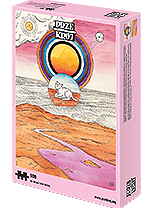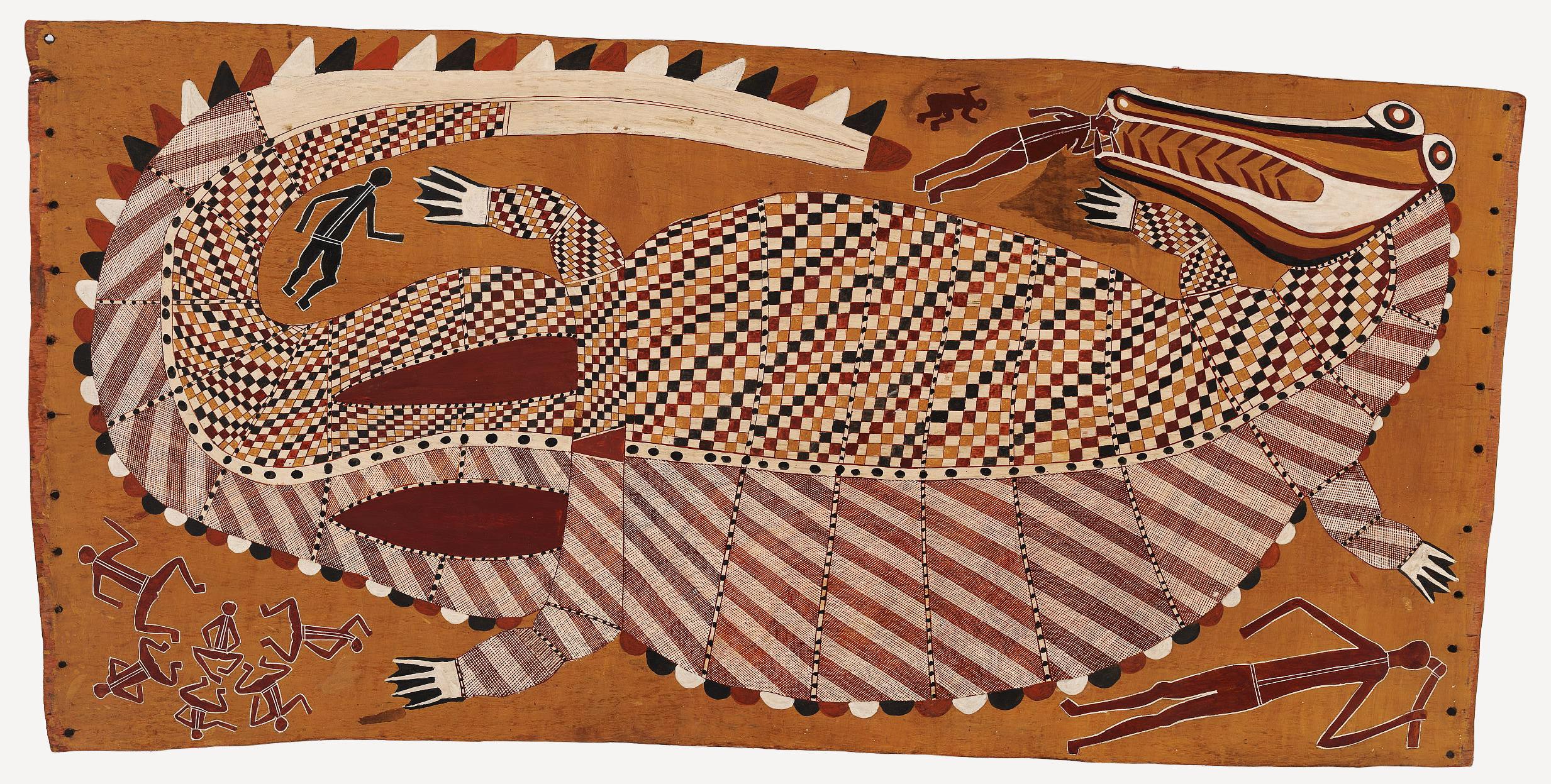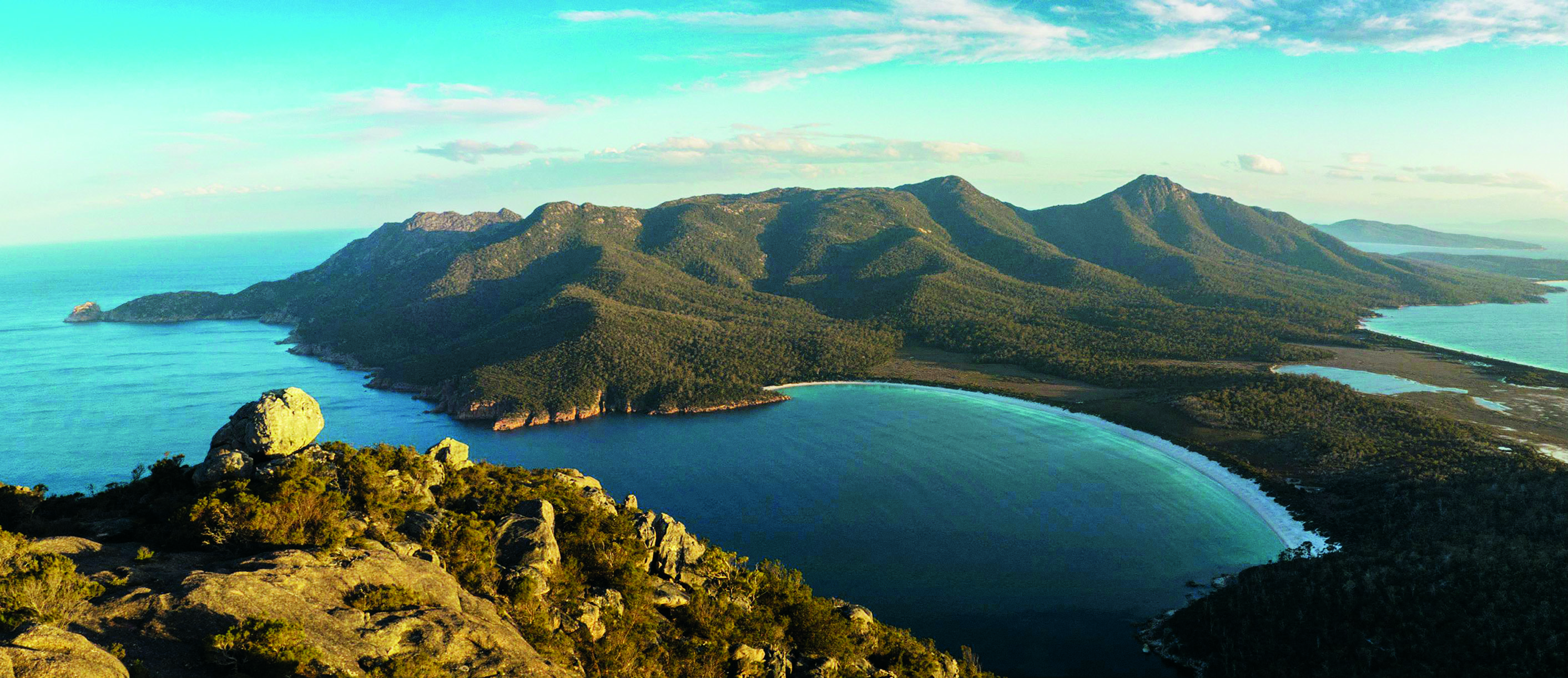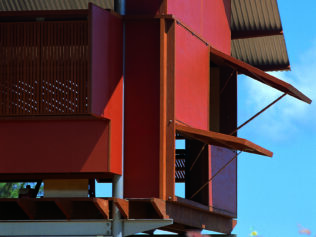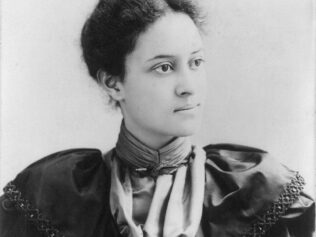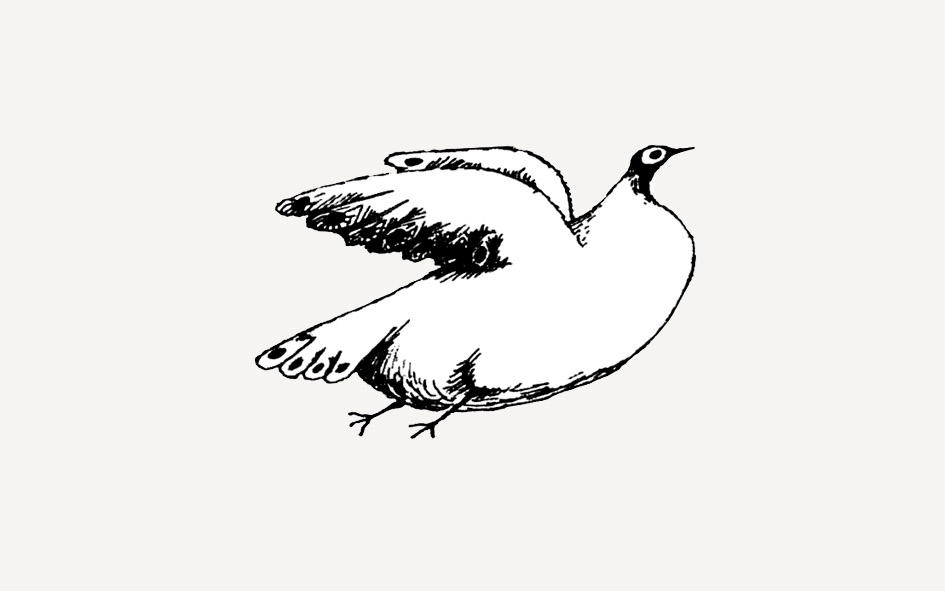
For decades, Aboriginal art was pushed into a drawer labelled ‘primitive art’, treated as part of the realm of ethnography or the souvenir industry. Nowadays, works by Pintupi painters from Papunya are considered the most important achievements of contemporary art in Australia. While it fits into the context of aesthetic trends and artistic controversies, Aboriginal art remains an important political voice, also in specific disputes over rights to the land.
Papunya Tula is a sandy settlement in the middle of the desert, located more or less in the heart of Australia. Its name in the Pintupi language means ‘the place where honey ants meet’. At the beginning of 1971, a new teacher, Geoffrey Bardon, arrived there. His pupils barely spoke any English, so he was assigned an interpreter, the Aboriginal man Obed Raggett.
In the 1950s, the Australian government had introduced forcible assimilation policies. Since then, Papunya has been a place where Aboriginal people from various nomadic tribal groups were settled, especially the Luritja and the Pintupi. Their ancestors had been poisoned, starved or murdered in other ways, their land taken away from them and used as new pastures or settlements. To thrive as nomads, Aboriginal people need to be constantly on the move. Not much connected them with Papunya, but they couldn’t leave it without permission from the authorities. Which is why they struggled with accepting the new reality, on top of worrying about the disappearance of their languages and cultures. Bardon compared Papunya to a death camp. At the beginning of the 1970s, its population was about 1000.
In the local school, 14 teachers were teaching Aboriginal children English and the basics of European culture. Education was creating an even bigger gap between the children and their parents, who spoke traditional languages and were rooted in their own culture. Bardon, who taught art among other subjects, didn’t follow the curriculum. He was interested in Aboriginal painting. For example, he noticed that children preferred to paint on the floor and not on tables. When he met them outside of school, he saw that they drew signs and symbols in the red earth, whispering something and clapping while doing it, as if they were telling some kind of a story. At the end, they would erase the symbols in the sand and start everything from scratch. The teacher encouraged them to draw those patterns. No wonder children started calling him Mr Patterns.
Several months later, the grown-ups’ attention was drawn to what was going on during art classes, and Bardon came up with the idea to decorate the school with Aboriginal paintings. This was not a task for children though, but for the Pintupi elders. That’s how the landmark piece, Honey Ant Dreaming, appeared on a school wall. The mural, consisting of circles, half-circles and lines, could – to the uninitiated – look like a decorative border or, at best, an abstract painting. In fact, it portrayed a ritual presented through conventional shapes. Men were represented by forms similar to the letter ‘U’ and ants were represented by yellow and black dots. That was the technique used previously in drawings in the sand or directly on male bodies. In Papunya, the Pintupi elders decided to transfer the painting onto a permanent medium and, at the same time, preserve what, up until then, was ephemeral and even taboo. Several murals were created on the walls of the school buildings: Wallaby Dreaming (a wallaby is a type of small kangaroo), Widow’s Dreaming and Snake Dreaming. Men, sometimes in groups several dozen strong, met in front of those murals and sang.
At that time, Bardon started collecting various examples of Aboriginal patterns and published them in the school newspaper. But most importantly, the adults warmed to the idea of painting. From then on, they painted not only on the walls, but on anything they could find: bits of board, wooden planks, pieces of plywood, old fruit boxes, scraps of old lino and even on car wheel covers. In September 1971, the Papunya authorities allowed the men to work in a warehouse located next to the administration building.
People realized Pintupi art’s important potential – the paintings could help Aboriginal people to become independent of the social security system, to which they were condemned in Papunya (in short: the authorities paid them to stay there). The production of paintings was so extensive that Bardon decided to try to sell them in Alice Springs, a town a six-hour truck drive away from Papunya. The first cheque from the Stuart Art Centre in Alice Springs was for $1400 Australian dollars. This encouraged the painters from the settlement to do further work and attracted more adepts of the art. At the beginning of 1972, already 30 men were painting under Bardon’s charge.
Secret geometry
These were the beginnings of the biggest breakthrough in Australian art. It took place not in a gallery or in an artist’s studio, but in a small settlement in the middle of the Australian desert. A decade later, Clifford Possum Tjapaltjarri was the first Aboriginal artist to receive the Alice Prize, an award given to contemporary artists. Uta Uta Tjangala, one of the first painters in Papunya, previously employed for gardening work and, as Bardon recalls, known for carrying boomerangs behind his belt, started painting huge, large-format canvases. Other artists who became part of the canon include Billy Stockman Tjapaltjarri (a school janitor), Kaapa Tjampitjinpa and Pansy Napangardi.
In 1984, James Mollison, the director of the National Gallery of Australia in Canberra, called the paintings from Papunya Tula “the finest abstract art achievements to date in Australia.” Today, such opinions don’t startle anybody. Those paintings are the pride and glory of museum collections and break records at auctions. Many Australian historians now claim that Aboriginal art has proven its superiority over artistic output with European roots.
People say that Aboriginal art is the oldest unbroken art tradition in the world. Some of their cave paintings were created even 50,000 years ago. The desert itself was repeatedly covered by their drawings – like mediaeval palimpsests in Europe. The soil was for Aboriginal people a medium on which they inscribed their history. The ephemeral drawings created directly on the ground or on the human body for ceremonial purposes were transferred to walls and boards in Papunya, and after a while, also onto canvases. The most typical iconographic motif used by painters from the Pintupi tribe are interlinked concentrical rings, often consisting of dots. They create a kind of secret geometry. Those and other patterns describe Tjingari, or journeys of the ancestors, both men and women.
The indigenous inhabitants of Australia believe that their continent was formed by the prehistoric journeys of their ancestors; the details of those epic acts were passed on to the following generations in the form of ‘Dreamings’ linked to particular places. Each Aboriginal person inherits rights to specific Dreamings, but also responsibility for them. The carer of a particular Dreaming has a right to tell it or represent it in drawings on soil and on the skin during rituals. Dancing and singing, they tell their particular story. After the ceremony, the drawing on the ground was always erased. As a result of this practice, many Aboriginal patterns remained out of the reach of people from beyond the narrow group of the initiated.
The Papunya murals and paintings were carriers of holy wisdom, revealing a snippet of hermetic heritage, protected and passed on from generation to generation. Fledgling artists knew that they had a new task to fufill, that they had to enclose the equivalent of history in their works, previously comprised in a complex ritual. Equally, they had to protect the taboo and not reveal some secrets. Even during the creation of the murals in the Papunya school, there were discussions about which patterns were suitable for women and children to see. But to preserve their history, some light had to be shed.
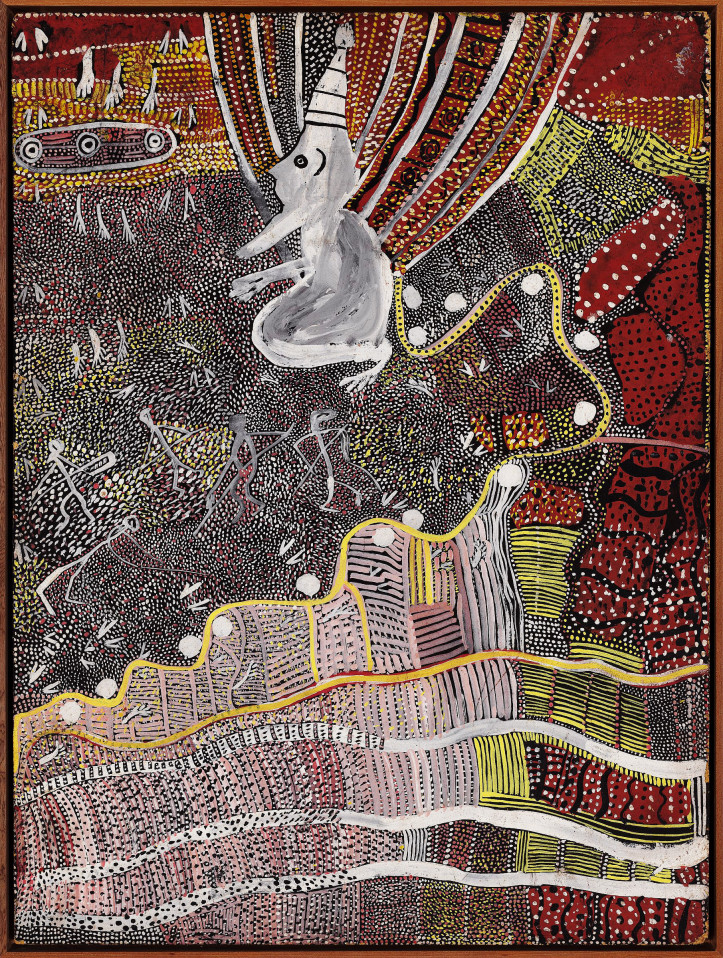
Aboriginal art has always been linked to storytelling; those paintings cannot be seen as puzzles to be solved. At times, it can’t even be said for sure what some elements mean, even though they are never fully abstract. Concentric rings can represent camps, holy rocks and bonfires. U-shaped forms symbolize humans or spirits (as this is a shape left in the sand by a person sitting cross-legged). To decipher this art correctly, a story is needed.
The first Papunya murals were about particular places and natural phenomena. They were a kind of map, they articulated meanings of specific locations, rituals or ideas. Most importantly, those works affirmed the Aboriginal culture. They were created by male elders who, by doing this, connected with their ancestors. In the process, somewhat unintentionally, painters from Papunya (and then from other settlements) radically changed the tradition of Australian landscape painting. As a result of their actions, the desert became an intimate, rich landscape; a place filled with living experience.
The road to galleries
In the 1990s, Rover Thomas, a painter from Turkey Creek, a small settlement in Western Australia, came for the first time to Canberra and visited the National Gallery of Australia. Seeing one painting, he shouted, “Who’s this dude who paints just like me?” He was standing in front of a canvas by Mark Rothko. Thomas, like the American artist, painted large blocks of monochrome on his canvases.
Australian scholars think that it was exactly thanks to new movements appearing in post-war art – such as minimalism and abstract expressionism, the most important representatives of which were Pollock and Rothko – that the aesthetics of Aboriginal art were fully appreciated and then accepted as part of contemporary art. Nowadays, Aboriginal artists from the most remote corners of Australia, but also those from the cities, usually without any formal art education, participate in the circulation of art on the same terms as artists educated in fine art academies.
For decades, the problem was not so much the lack of Aboriginal artists or even the lack of audiences for their art, but the Euro-centrism of the Australian art world. To fully appreciate the art of Aboriginal people and give it appropriate status, the art world had to change. This slow process gained momentum only towards the end of the 1980s. Today, this art is at the centre of discourse about Australian art, and also (or perhaps first and foremost) plays a role in the art market. It is estimated that as much as three quarters of sales are Aboriginal works, while Aboriginal people themselves are only 3% of the population of Australia, and only 0.5% live outside of urban centres. Here, we are talking about works of art mainly created far away from the cities.
Australian museums are different to similar institutions across the world, because it is Aboriginal art that takes centre space there. A 19th-century painting can sit happily next to Aboriginal carved shields from the same period. Those pieces are always equipped with culturally-sensitive captions – it is not an ‘unknown artist’, but an ‘ancestor’. This is in complete contrast to Western European galleries, which are dominated by the perspective of colonial art-collecting practices, and where a large part of the cultural material remains nameless. Moreover, the Western art world promotes outstanding individuals and enables individual careers, so it distinguishes between particular artists even among the Aboriginal painters.
Surely there is no other country in the world where the art of indigenous peoples, the rightful inhabitants, gained such status as it did in Australia. This art, while fulfilling its duties to the community, practically informed the entire discourse on modern art in Australia. That has never happened in South America, neither has it happened in New Zealand, nor in Canada. Recognizing Aboriginal art as modern art required first accepting the notion of Aboriginal people being able to speak about themselves and to decide about how they are represented.
The fact that the first mural, Honey Ant Dreaming, didn’t survive for long (it was painted over in 1974), shows how little value was assigned to the first paintings in Papunya. Anthropologists were interested in Aboriginal art even before that, as were the regular Australian public, but art organizations remained impassive. There were, however, exceptions. Already in 1958, the National Gallery of Victoria in Melbourne commissioned a set of tutini grave posts, used during a send-off ceremony for the dead called pukumani, from artists from the Tiwi people, inhabitants of Melville Island. Those artists, aware that they were creating a piece for the outside world, employed traditional techniques and decoration methods, but purposefully used a different type of wood than the one assigned to the ritual.
The breakthrough in Papunya started a domino effect. The example of the Pintupi painters was followed by Aboriginal people from other corners of the country. In the 1980s in Fitzroy Crossing, a town located in the North-Western part of the continent and struggling with poverty for many years, Mangkaja Arts Resource Agency was created. In the Walmajarri language, mangkaja refers to a temporary shelter made of twigs and grass used in the rainy season. The authorities built a shed there where Aboriginal people could carve boomerangs and sell them to passing tourists for a few dollars a piece. But they started painting instead and contributed to the renaissance of Aboriginal art all over Australia. One of them was the artist Peter Skipper, widely known nowadays.
For several dozen years, batiks with walka motifs, typical for the Pitjantjatjara people, have been developing in Ernabella in South Australia. Colourful concentric patterns, nowadays known as Ernabella designs, were first transferred to fabric wall hangings and rugs woven by women using locally produced wool. In the 1970s, they also learned how to create batiks, which brought fame to the local community. Ernabella Arts Incorporated, a cooperative providing training and selling local products, is one of the oldest continuously running organizations bringing together Aboriginal artists.
In 1986, the Warlpiri male elders living close to Alice Springs decided to transfer their ancestors’ patterns, which they called kuruwarri, from soil to other mediums. They started painting on whatever they had on hand in the local cultural centre. In the same year, the Warlpiri women, in an attempt to teach children their Dreamings, painted over 50 kuruwarri used in women’s ceremonies (yawulyu) on pieces of cardboard and paper. Today, the works of women and men covered by multi-coloured dotted patterns are in the National Gallery of Victoria in Melbourne.
Mages and artists
Aboriginal art was not first discovered by the descendants of European colonizers in the 1970s. Already decades earlier, both travellers, anthropologists and even European avant-garde artists were interested in it. The formal similarities between Aboriginal sculpture and European avant-garde art was noticed quite early on. Kakadu tribe bark paintings resembled cubist art, and some works from Arnhem Land were compared to Paul Klee’s paintings. But those so enamoured with it still made a clear distinction between artifacts brought from Africa or Oceania, and art in the European sense of the word.
Up until the 1980s, the works of Aboriginal people were valued mainly for their ‘authentic primitivity’ or their ability to resist modernity. The closer they were to the times from before European colonization, the better. All foreign influences supposedly destroyed the authentic local culture. That’s why experts were filled with mixed feelings when met with, for example, the post-impressionist watercolours created by the painter Albert Namatjira, who lived in the first half of the 20th century. Claude Lévi-Strauss himself compared his works to an old maiden’s watercolours.
For Western anthropologists, Namatjira remained not ‘authentic’ enough, even though his works were highly popular. By contrast, an artist praised for his ‘tribalism’ was Yirawala from the Kuninjku tribe (Arnhem Land), who painted on bark. Born at the end of the 19th century, he was a leader of his community, a man of great pride. He cared about preserving religion, tradition and the rights to the land; he wasn’t interested in an artistic career. While Namatjira’s watercolours were seen as a sign of assimilation, Yirawala was to represent a real Aboriginal art. Similarly, the Papunya painting at first seemed on the one hand to be not ‘primitive’ enough, on the other hand – as tribal art – it didn’t yet have its own place in the art world.
Even though Aboriginal or African art was often a source of inspiration for modernist artists, primitivism remained an ideology in the service of exclusion. Modernists might have delighted in tribal art, but they clearly demarcated what belonged to one world, and what to the other. Nowadays, those same artists who exhibit their works in galleries in Australia, in Europe often end up in ethnographic museums. The anthropologist Benoît de L’Estoile called them ‘Museums of the Other’, as opposed to ‘our museums’. In practice, such division means that the ‘others’ can’t speak for themselves and are not allowed to decide how they are shown.
As late as in 1984, the MoMA in New York organized an impressive exhibition entitled Primitivism, which revived the legend about European artists supposedly ‘discovering’ primitive art. Another famous exhibition held in Paris in 1989 – a huge, unprecedented endeavour entitled Magiciens de la Terre – was to compare Western and non-Western art, allegedly on equal terms. Naturally, artists from Australia had to be present. A group of 12 Warlpiri tribe artists from Yuendumu came to the capital of France to create a sand painting in situ, by Richard Long’s piece on the wall. But to create such juxtaposition, there needed to be a common denominator – it was, however, not the art itself, but the magic embedded in the title of the exhibition. No wonder that the show in Paris was met with fierce criticism, because it allowed Europeans to recolonize – this time in an intellectual and commercial sense – the furthest corners of the world. It wasn’t an accident that the Warlpiri artists were asked to create a ritual painting on the floor, which was closer to their ritual sphere, despite the fact that they had been painting on permanent mediums for several years by that time.
Statue of resistance
Aboriginal artists, treated like mages in Paris and not like fully-fledged artists, were removed from the cultural context specific to them. They were cut from their roots and consequently became devoid of political meaning, which was key to their creativity.
Yet this art still plays an important function, for example, in the Aboriginal fight for land rights. In the National Museum of Australia in Canberra, there is a huge 5 x 10 metre painting called Ngurrara (in the Walmajarri language, the word means both ‘country’ and ‘home’). This multicolour canvas, even though it appears to be abstract, looks like fields seen from an airplane, although – due to the colour scheme – we would sooner believe that this is some strange, vivid planet and not Earth. Using Western metaphors, we could say that the work has the breadth of Jackson Pollock, the colours of Matisse and the forms of Joan Miró.
Even though we won’t find typical cartographic elements in Ngurrara, it is a kind of map. It represents the area where the artists responsible for the canvas come from. The thick line depicts a stock route, while rings represent wells and natural water sources, places of importance to nomads. Individual parts of the painting were created in Fitzroy Crossing. But the first version of it, which can be seen in the museum in Canberra, turned out to be too small, so there was another version created, this one at a size of 80 square metres. The group of artists responsible for it was even larger than before. It took 50 painters two weeks to paint it. The huge painting was used in their 1996 claim to the land. It was evidence of the Ngurrara people’s connection to the land that they were forced to leave in the 1950s and 1960s. This was expressed through the painting. They won the case once and for all only several years ago. To support their community, in 2000 Ngurrara I was sent straight from a shed in Fitzroy Crossing to a Sotheby’s auction in Sydney, and then to the museum in Canberra.
The painting was not only evidence in the case, but also a carrier of knowledge – it showed different ownership rights than those written in statue books. Aboriginal art has repeatedly played this role. In 1963, when the Yolngu people from Yirrkala petitioned the federal government with regard to land ownership and opposed the devastation of Arnhem Land by the mining industry, the dual language text of this historical document was presented as a painting on bark (hence the name ‘Yirrkala bark petitions’).
For Aboriginal people, art is an important element of their identity. It allows them to present their heritage while simultaneously resisting the dominant colonial culture. This is highlighted by leading Aboriginal artists. The paradox is that it was Aboriginal people who first developed intercultural practices, strategically drawing from traditions previously unknown to them. They were by no means attached to their ‘primitivism’, as was often suggested. By transferring traditional patterns from rocks, soil and body paintings onto mediums derived from Western art (such as canvas), these artists created new aesthetic phenomena. They acted as if the exchange between cultures was natural, more – key for their survival. Thanks to that, their art had a chance to find a wider audience and their claims be heard.
Nevertheless, when visiting museums in the main Australian cities, we could easily get the wrong impression about the life of Aboriginal communities. We should also not give into the atmosphere of splendor and razzmatazz surrounding those institutions and the consumption of the art itself. It’s good to look at those works more deeply and register important gestures of Aboriginal artists. Towards the end of the 1980s, Aboriginal people boycotted the celebrations of the 200th anniversary of the existence of Australia – a celebration that only makes sense from the colonial perspective. Arnhem Land artists made 200 ceremonial hollow log coffins. Djon Mundine from the Bundjalung people came up with the idea of creating ‘The Aboriginal Memorial’. The project grew, and in the end 43 male and female artists from Central Arnhem Land took part in it. The National Gallery of Australia was involved in the project. Each log from this ‘forest of souls’ represents one year of colonial history. Mundine compared the monument to a large “war cemetery and a war memorial to all those Aboriginals who died defending their country.” In 1988, the monument was shown at a biennial in Sydney. Today, it welcomes visitors to the National Gallery of Australia in Canberra.
Several hundred metres away from there, right next to the buildings of the Australian parliament, the Aboriginal Tent Embassy operates under the Aboriginal flag. Local activists live in tents and camping booths. Their aim is to remind people about the need for sovereignty of Aboriginal peoples and the necessity of entering into a treaty with the rightful inhabitants of Australia, never signed with them by the white invaders. The Embassy has protested almost without a break since 1972. “We are Australian Aboriginal people, not Aboriginal Australians,” stress the activists gathered there.

Translated from the Polish by Anna Błasiak

